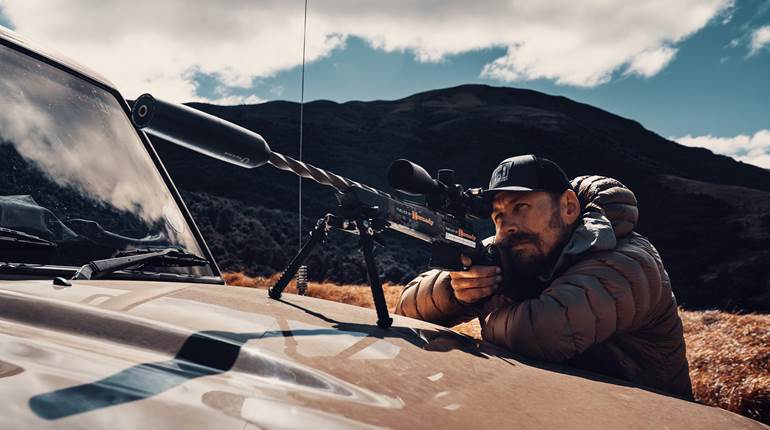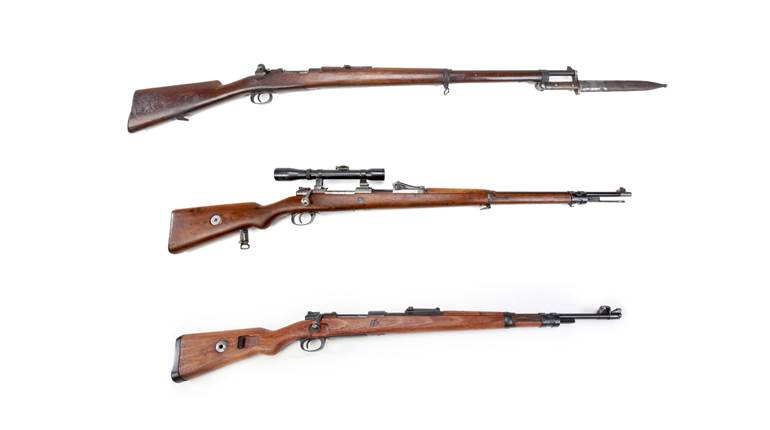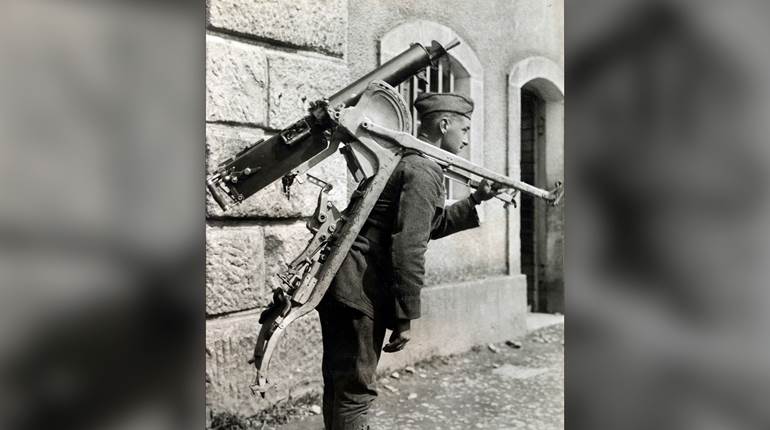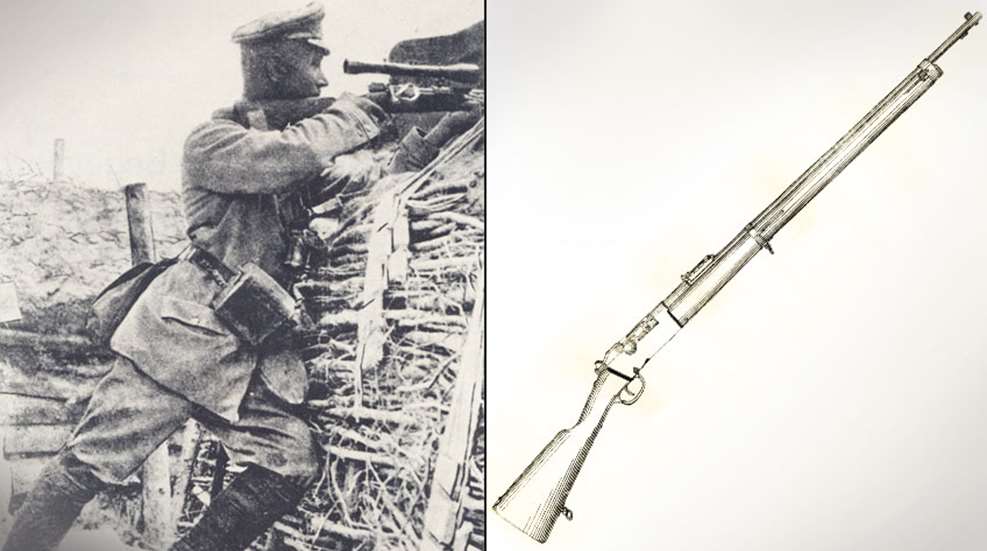
The introduction of smokeless powder with the French Model 1886 Lebel rifle (r.) launched a revolution in small arms. In just a few short decades, the combination of bolt-action rifles, improved cartridges and telescopic sights would lead to sniping as we know it during the Great War, in this case a German sniper armed with a scope-equipped Mauser Model 98.
Although the end of the American Civil War resulted in a rapid drop in the demand for military firearms, the technical advances in firearm design made during those bloody years were not to be entirely consigned to the dustbin of history. Indeed, the situation improved markedly postwar, for by the early 1870s the introduction of breechloaders chambering reliable metallic cartridges was to become commonplace. Crucially, this new ammunition had enabled designers to perfect repeating arms that had hitherto been limited in their performance by the use of rimfire or combustible cartridges, and it also enabled work to forge ahead with the development of more powerful rifles.
Nevertheless, as far as most armies were concerned, repeating longarms were not a requirement. They were expensive, used ammunition too quickly and were mechanically over-complex. Manufacturers thus began to look toward the new bolt-action designs as a solution to the never-ending quest for the perfect military rifle. They were strong, relatively cheap to manufacture, more-or-less soldier-proof and highly accurate. The first of the genre to be issued for general service had been the Model 1841 Dreyse needle-fire rifle, arguably the single most significant step in the history of military-rifle design. True, its paper cartridge was primitive and the breech suffered from gas leakage (obduration), but it was undeniably effective. The use of the Dreyse along with that of the French Chassepot rifle during the Franco-Prussian War of 1870-71, had most of Europe’s chiefs of staff and arms designers taking note, and within a few years Germany, Austria, France and Switzerland had all adopted the concept, mostly producing large-caliber rifles loaded with blackpowder ammunition. However, the more conservative countries, most notably Britain and the United States, sat on the fence, remaining unconvinced of the superiority of the new designs.
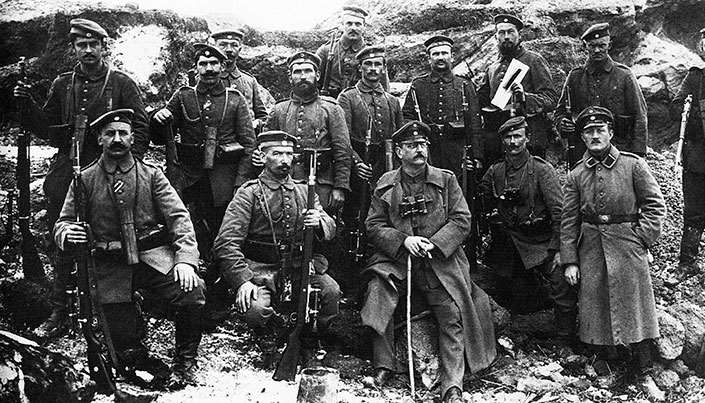
If there was one lingering problem for shooters it was the propellant; aside from fouling and sensitivity to damp conditions, gunpowder (what we call “blackpowder” today) created a telltale cloud of white smoke when ignited. Time and again, accounts from the Civil War told of sharpshooters being spotted because of the smoke giving away the position of a concealed rifleman. Neither was it efficient, for the low velocities it generated meant that shooting over long distances required considerable skill on the part of the marksman to allow for the drop in trajectory. It was left to a relatively unknown French chemist, Paul Marie Vieille (1854-1934), to change matters. In 1884, using nitrocellulose as a base, he created a propellant that, volume for volume, generated three times the combustive power of gunpowder, was virtually smokeless and left almost no residue in the barrel. To say it revolutionized firearm technology is something of an understatement.
Countries began to adopt the new smokeless powder wholesale, and by the first decade of the 20th century, virtually every nation in Europe had either modified existing rifle designs or produced new ones. France adopted the 8 mm Lebel M.1886 Lebel and M.1907 Berthier, Austria the 8x50 mm R Model 1895 Mannlicher, Germany the 8x57 mm Mauser Gewehr 98, Great Britain and its Commonwealth the 1889 .303 British Lee-Metford, soon to be replaced by the Mk 1 Lee-Enfield of 1902. In 1905 Canada initially armed its troops with the .303 straight-pull Mk. II Ross, and the United States had finally settled on the M1903 Springfield, initially in .30-’03, although the potent .30-’06 Sprg. cartridge soon replaced it. In terms of power, range and accuracy, there was little to choose between any of these arms, their actions were easily strong enough to cope with the new ammunition, they were magazine-fed and normally sighted to 2,000 yds./meters.
By the late 1890s, in terms of small arms, the world’s playing field was pretty well level, as long as soldiers knew how to shoot them. During the Second Boer War (1899-1902), to its chagrin, Britain found itself wholly outclassed by the Boers when it came to accurate, long-range shooting. This should have been an object lesson to British army leaders, but they ignored it to their cost.
The Great War
When war broke out on July 28, 1914, Europe’s armies mobilized quickly, but the belief was that “it would end by Christmas.” What few could foresee was that it would gradually turn into a landlocked stalemate that covered 450 miles of ground with a network of impenetrable trenches, spreading from the Belgian coast to the Swiss border. It was not long before British and French soldiers on the front lines began to suffer from a very high proportion of fatal head wounds.
Initially this was attributed to lucky shooting by a few skilled Germans, but the average of between 15 and 18 British soldiers killed per day, per battalion, was not the result of chance as Pvt. Frank Richards recalled.
“One morning Stevens and I were watching a man fix a hand-pump. Suddenly he slipped on his back in the water and we burst out laughing, then … Stevens too dropped down into a sitting position but this was no laughing matter. A sniper on our right front had got him right through the head. No man ever spoke who was shot clean through the head. Some lived a few seconds, Stevens lived about fifteen minutes.”
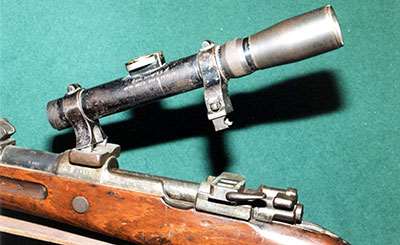
It is worthy of note that Richards, writing of his experiences in 1914, specifically used the word “sniper,” which hitherto had never been a term used for military shooting. Riflemen or sharpshooters were the traditional words to describe an above-average shot, but British officers had employed the term “sniping” as far back as the mid-18th century when describing hunting the small, agile game bird called a snipe. Bringing down one on the wing with a flintlock musket was no mean feat, and “going sniping” was taken to mean killing by means of accurate shooting. Exactly who began to use it in the context of targeting a human being will never be known, but it became a popular word in the British press from very early in the war, and it is possible to date its emergence into common usage from late 1914.

The Allies were powerless to deal with this new form of warfare, and it soon became clear that the German army was very well-organised, indeed, and more evidence began to emerge in the form of captured telescope-equipped rifles. In 1914, hunters from the vast forests of Germany had been ordered to hand in their rifles for the duration of the war, and whilst the true quantity requisitioned will never be known, between 10,000 and 15,000 is likely. In reality, they were a stopgap measure, as sporting guns were not really robust enough to survive the rigors of trench life for long. Besides, most were chambered for the commercial 8 mm hunting cartridge and were potentially dangerous if loaded with the new, more powerful 8 mm military S-type ammunition. Many were marked with an engraved plate stating: “NÜR FUR PATRONE-88, KEINE S-MUNITION VERWENDEN” (Only for Model 88 ammunition, not S ammunition.) However, by 1915 there were sufficient supplies available of Gewehr 98 rifles, factory fitted with optical sights. They were an accurate long-barreled rifle (29.1") with a very strong action, the bolt being locked by three lugs. After having been test-fired, those that proved exceptionally accurate were set aside for conversion by skilled armorers, and the quality of work, even up to the end of the war, was extremely high.
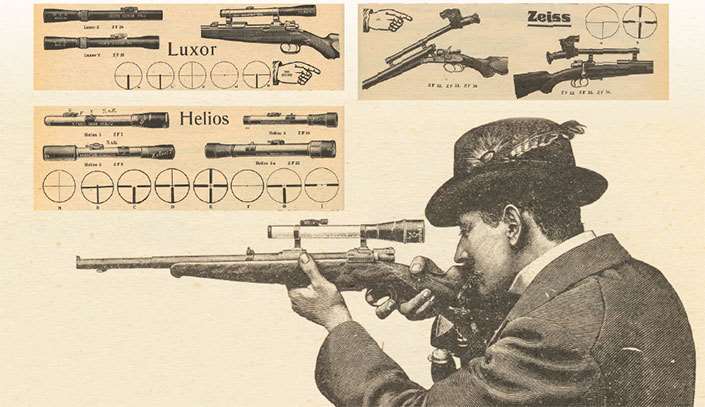
There was no real standardization though, with a huge variation of commercial mounts and scopes being used. Germany was the leader in the field of telescopic-sighted rifles because of its long hunting tradition and access to very high-quality optics based around the lenses produced at the Glastechnisches laboratory in Jena, Austria. Manufacturers such as Bock, Busch, Fuess, Gerard, Goertz, Hensoldt, Oigee and, of course, Zeiss, were world-renowned for their optical sights.
These sniping rifles fell into two main categories: claw-mounted overbore or partially offset scopes, but crucially, fully offset scopes were never employed. There was a simple reason for this; the German army had thousands of hardened-steel sniper plates at its disposal, and these were set along the front lines in enfilade to provide overlapping sniping and observation points. Usually very cleverly camouflaged, they were almost undetectable and gave the German snipers a huge advantage over the Allies. However, the small loopholes were only effective if used with a rifle that had overbore sights. At some angles, the offset provided the shooter with a view of nothing except the edge of the steel plate, hardly conducive to accurate shooting. The German military scopes almost exclusively used a post and crossbar reticle that provided for the shooter a simple range estimator; the gap between the vertical post and the horizontal bar on an Oigee equated to 6" at 100 yds., the width of a human head, and at 300 yds. that was equivalent to 18", or the width of a human body. Most German scopes were 4X, and they had an elevation drum and limited windage adjustment via a screw on the rear mount.
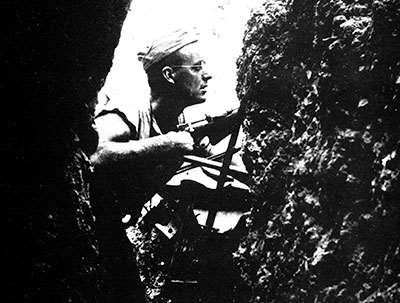
These rifles were initially issued to Scharfschützen or sharpshooters who were drawn mostly from the Jäger regiments, which contained a high proportion of hunters, gamekeepers and men who had proved to be exceptional shots. Unlike the Allied armies, German snipers were often selected for training because they were good shots, rather than being volunteers. In theory this was followed by a short instructional course by a qualified non-commissioned officer but as more scoped rifles became available, the numbers of men required to be trained grew and training schools had to be formed both in Germany and behind the lines. The training covered shooting, fieldcraft, camouflage and observation, although the first three elements tended to be taught as one, unlike the Allied syllabus. Generally six men per infantry company, or 24 per battalion, were employed as free agents on the front lines, much the same numbers as the Allies later employed.
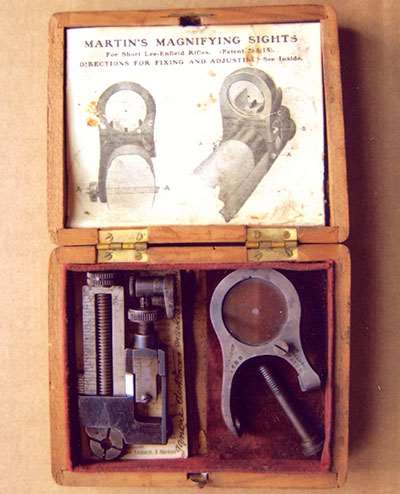
In the first 18 months of the war, there was almost nothing the Commonwealth armies could do to respond to the German snipers. Men who were good shots would do their best to pick them off, but it was an unequal fight. In an attempt to defeat the steel loophole plates, the War Office purchased as many heavy hunting rifles as it could find; 62 are recorded as being acquired. They were of some use, as Lt. S. Cloete later wrote. “We used a heavy sporting rifle—a 600 Express … and when we hit a steel plate we stove it right in. But it had to be fired from a standing or kneeling position to take up the recoil. The first man who fired it in the prone position had his collar bone broken.”
The German response was simple and effective; they placed another plate behind the first and filled the space with sand. The British were well aware that these rifles were impractical, so a solution had to be quickly found. In fact, a partial answer already existed in the form of target sights known as Galileans. Made primarily by four companies—Gibbs, Lattey, Neil and Martin—they comprised a magnifying front lens with an aperture or small ocular rear sight and they provided 2X magnification. Although rather fragile, they were more effective than iron sights out to medium ranges of around 300 yds. and purchase figures up to 1916 show around 14,000 were bought by the War Office (these will be covered in a future article by Robert Maze). Ordinary target aperture sights were also used, and there is anecdotal evidence that these were favored by Australian and New Zealand troops fighting on Gallipoli (April 1915 to January 1916), many of whom had been active target shooters before the war.
By mid-1915, a more permanent solution had been devised, in the form of a dedicated sniping rifle for use by the Allies. And that is where we shall pick up with our next installment of the series.












